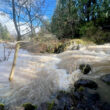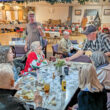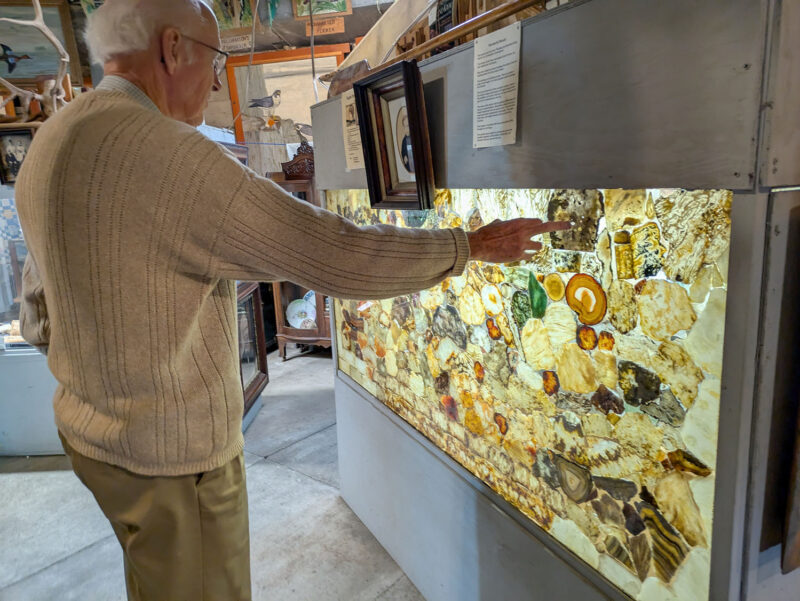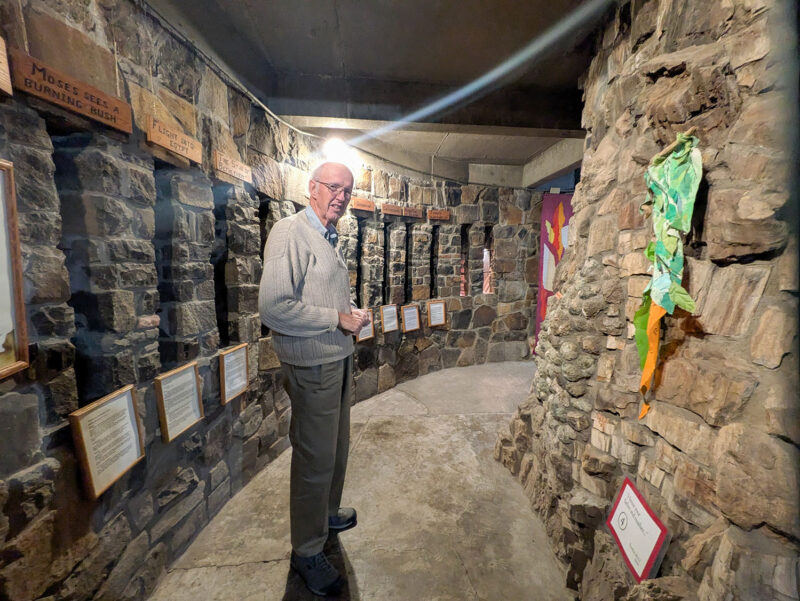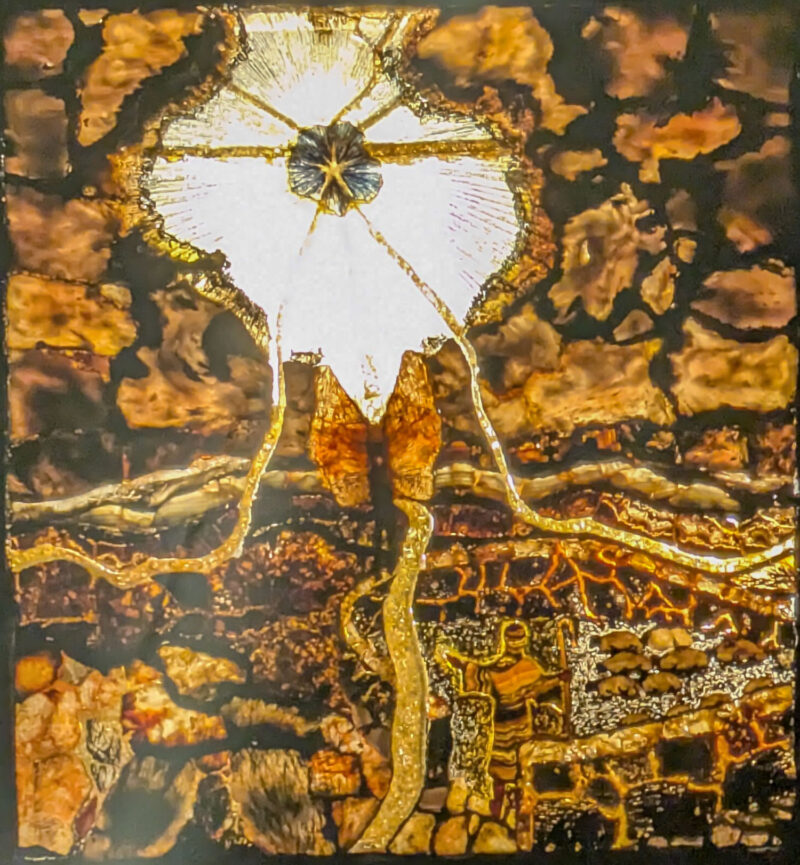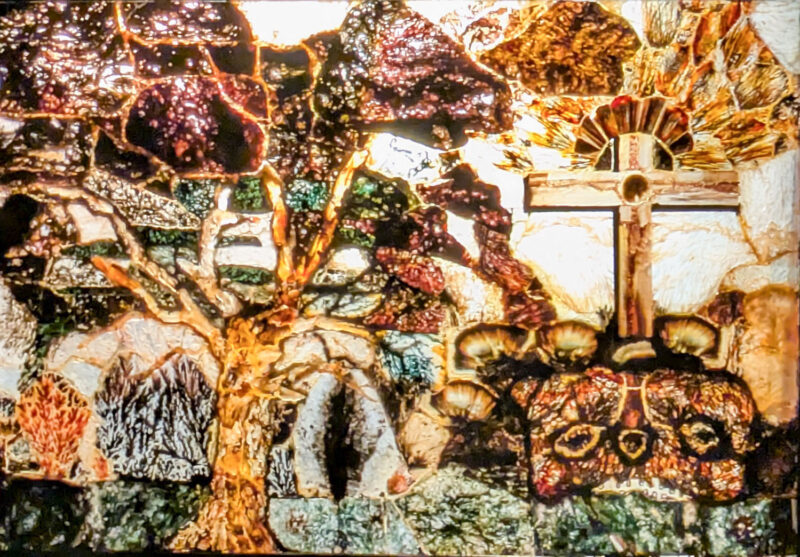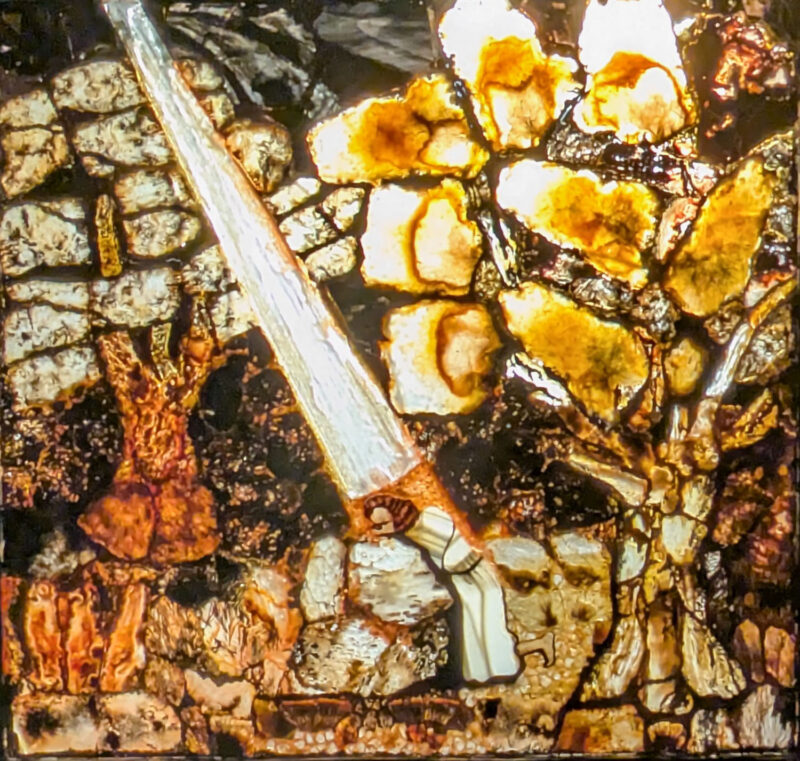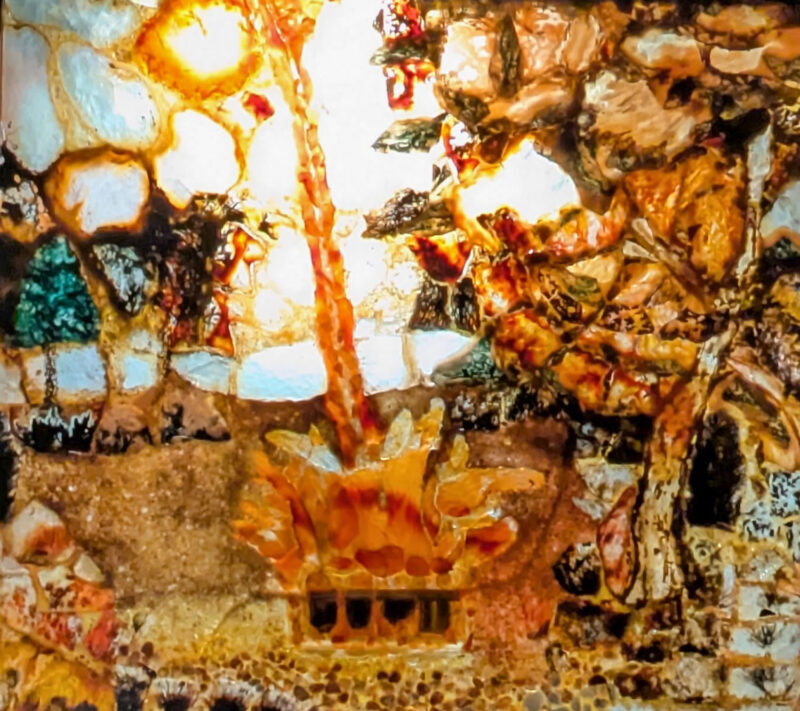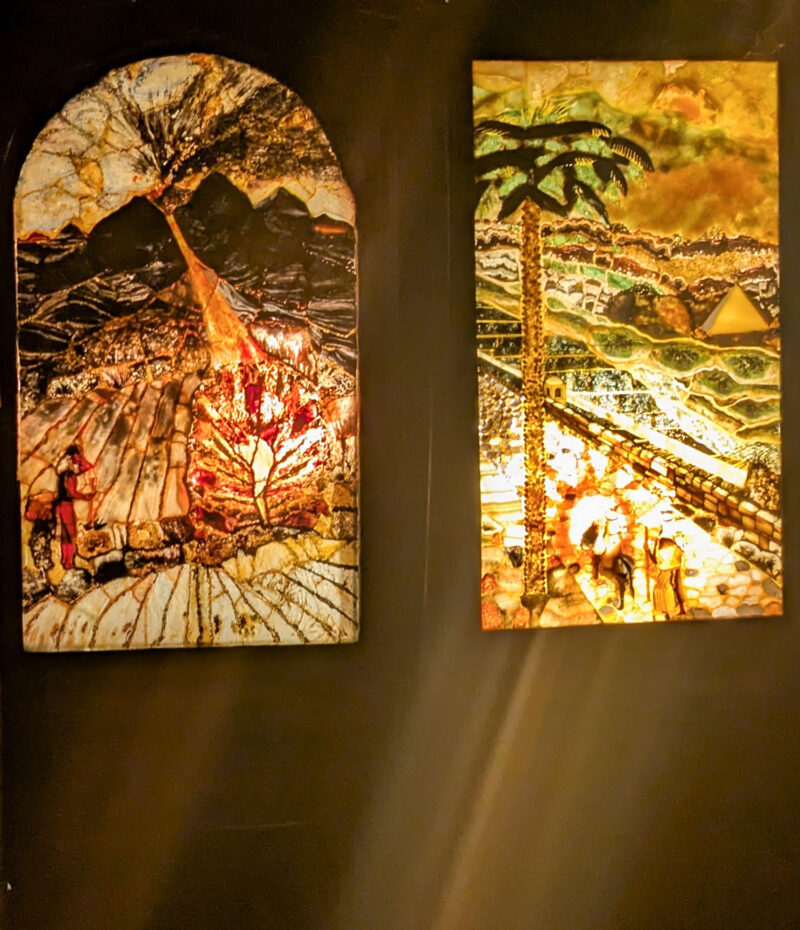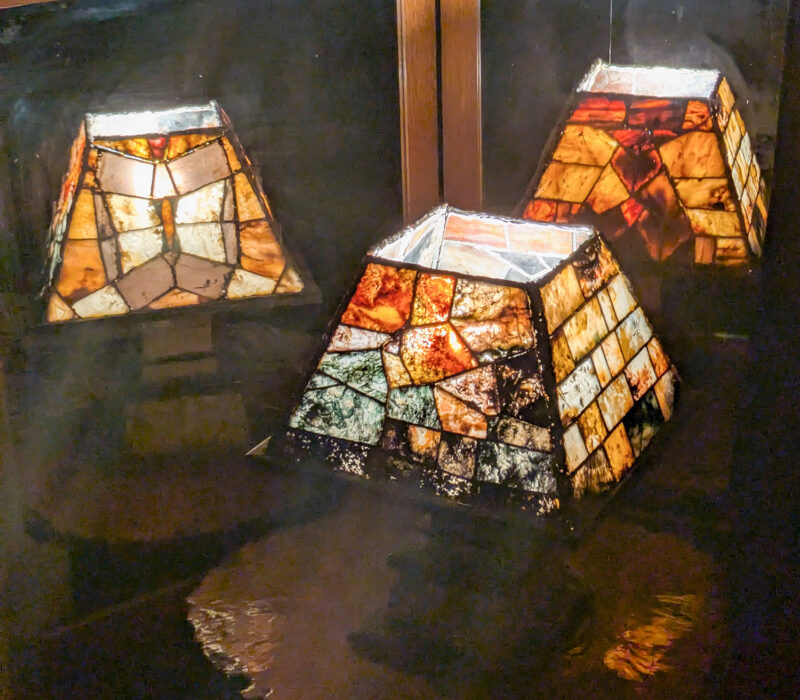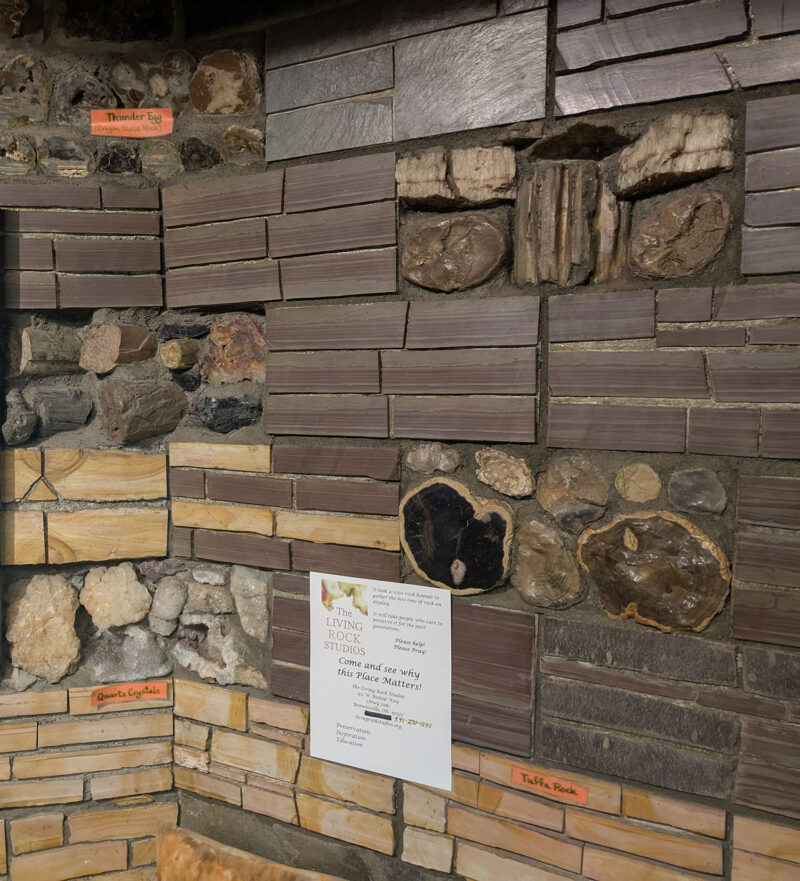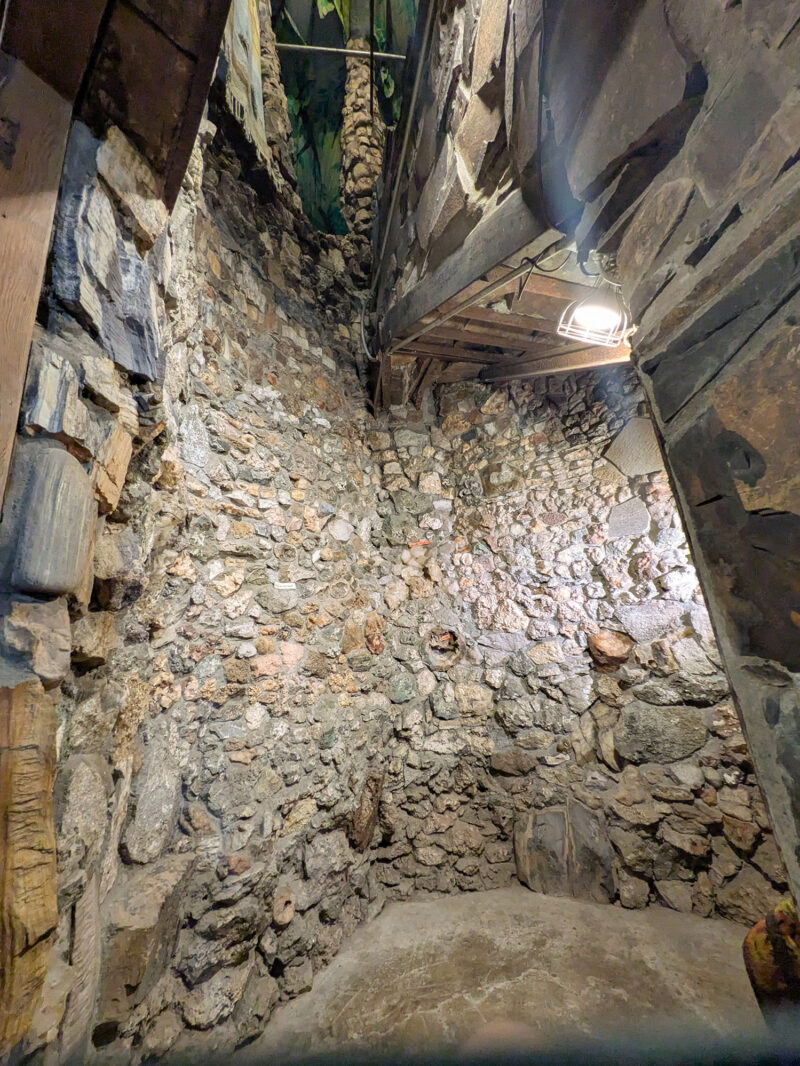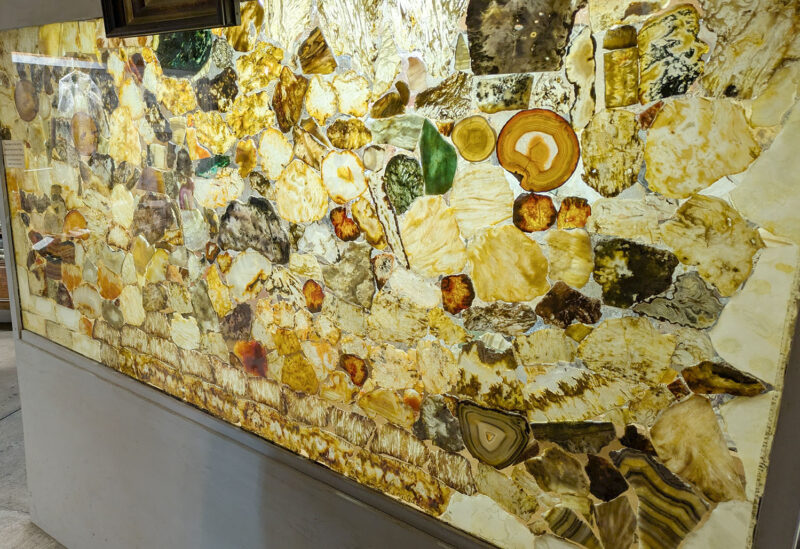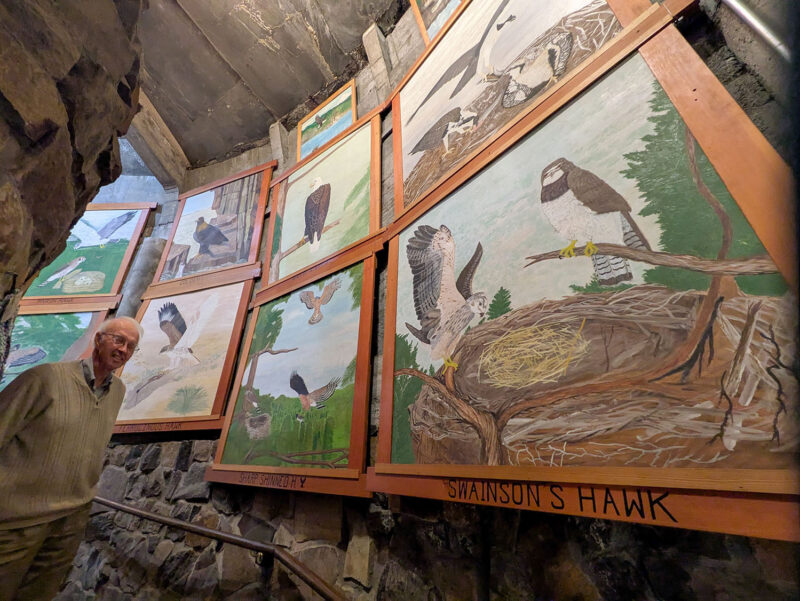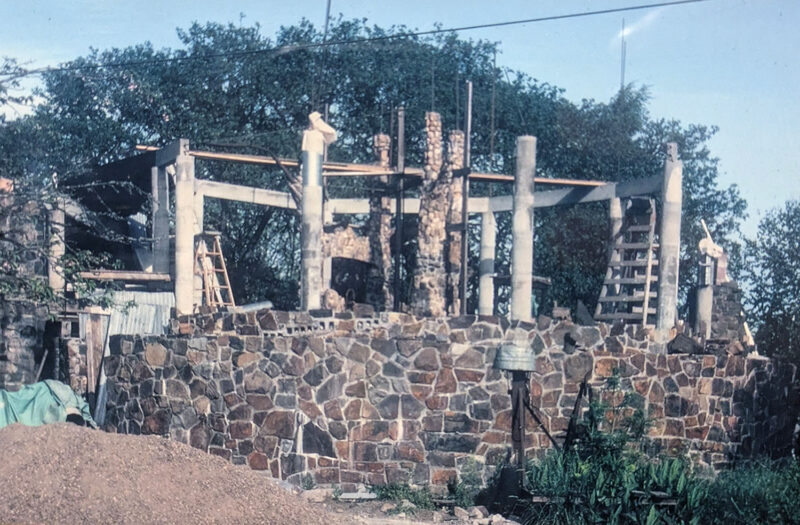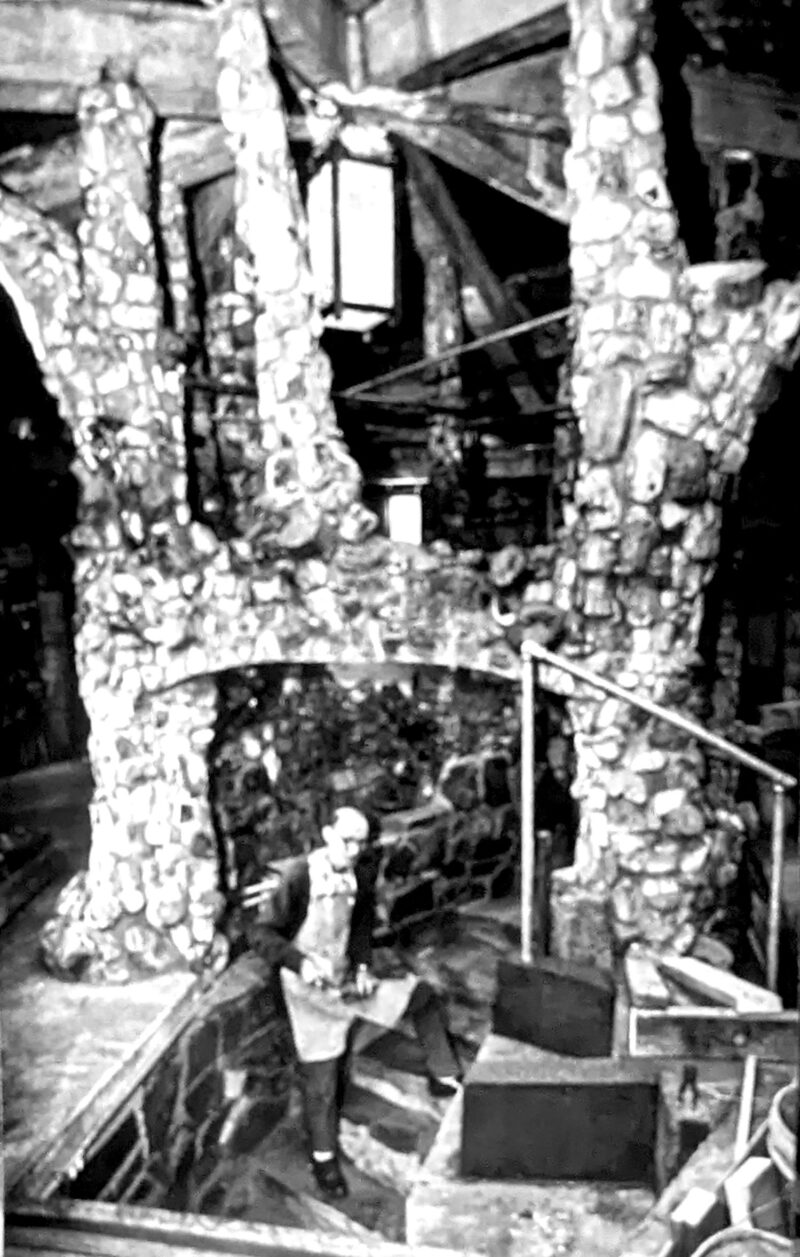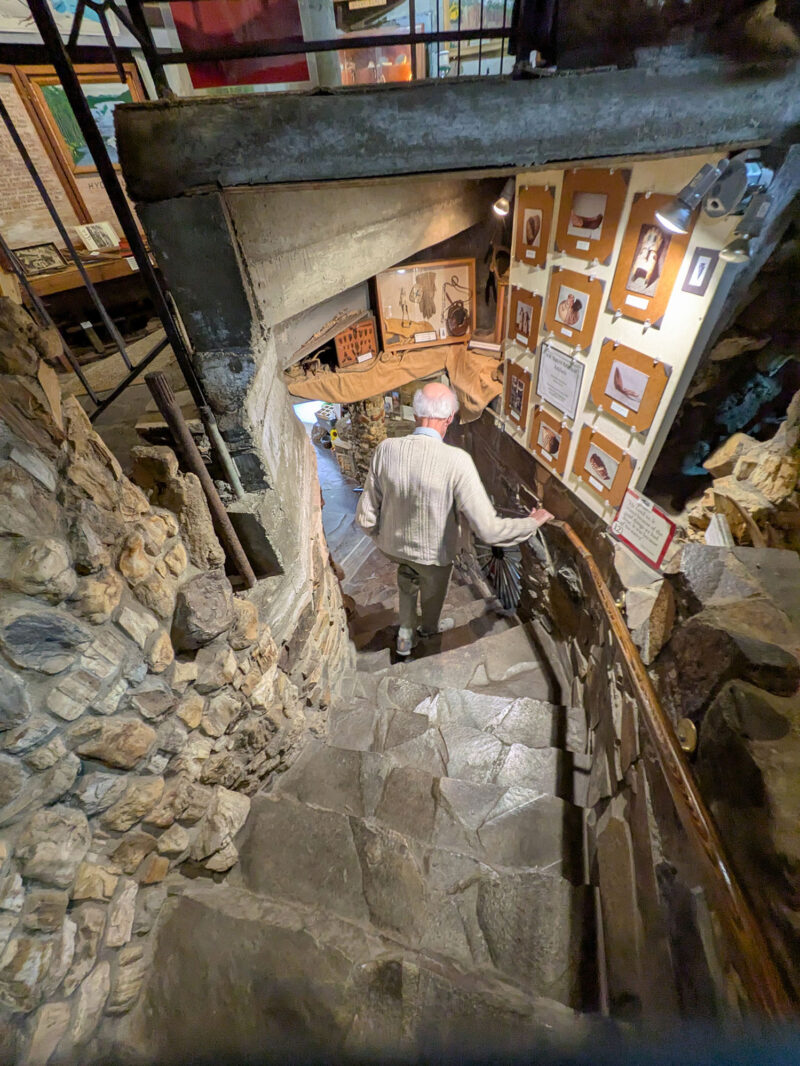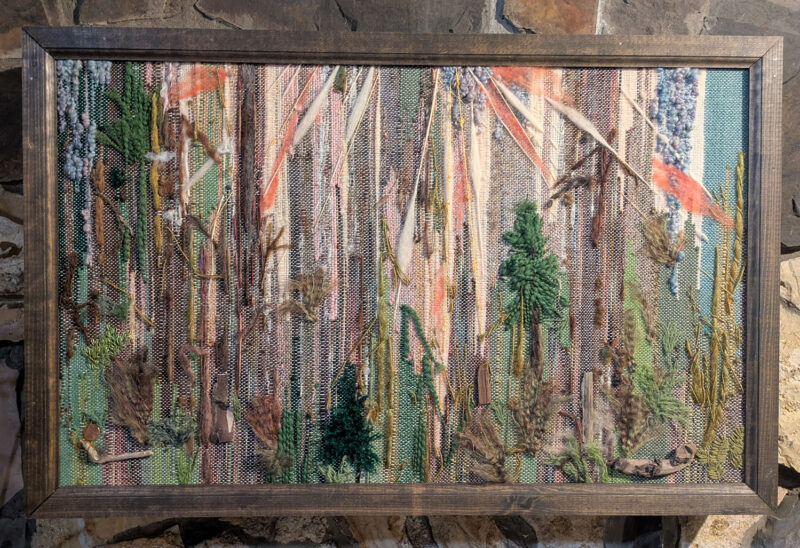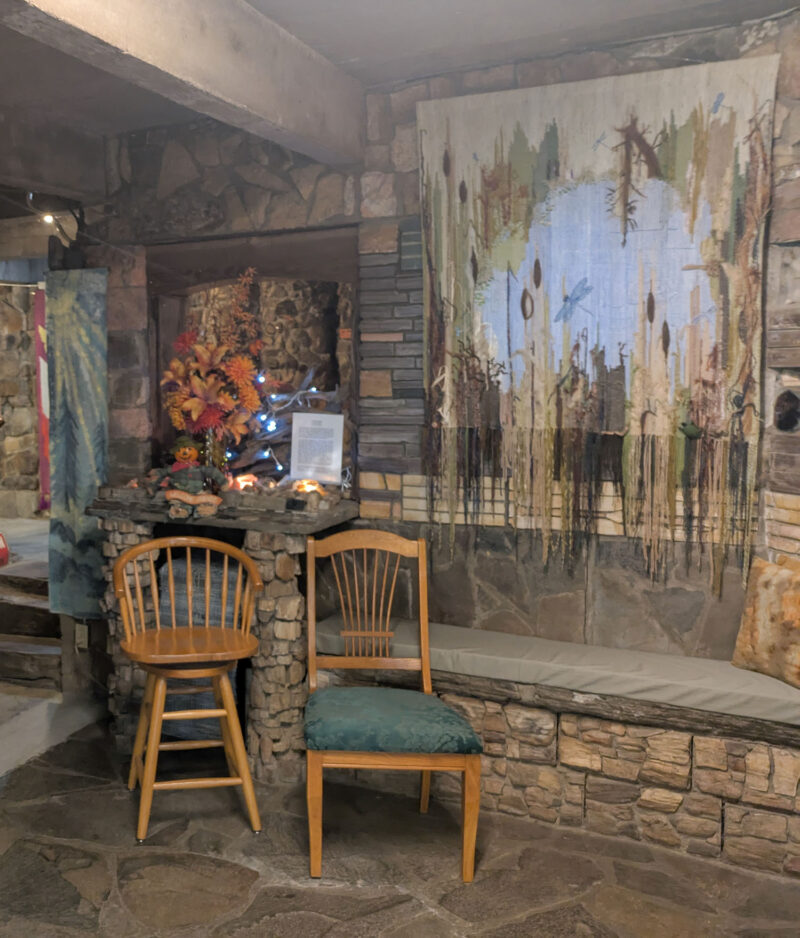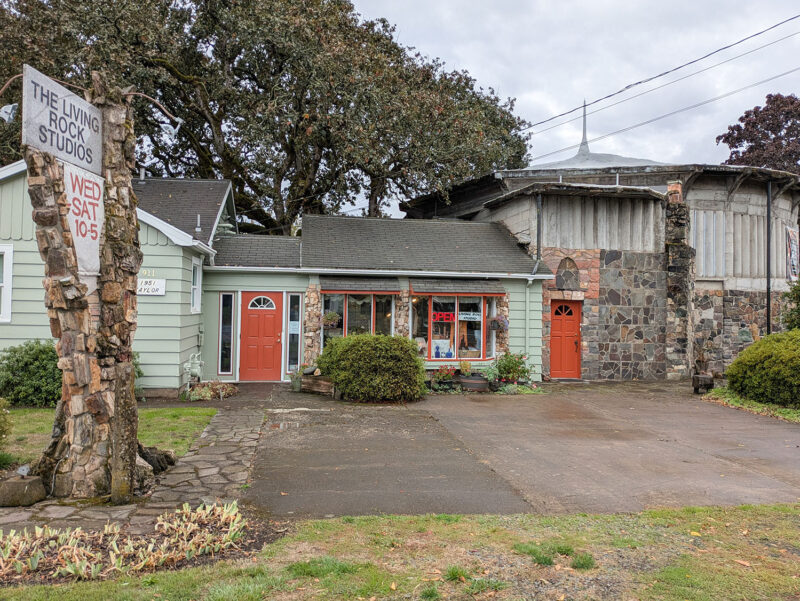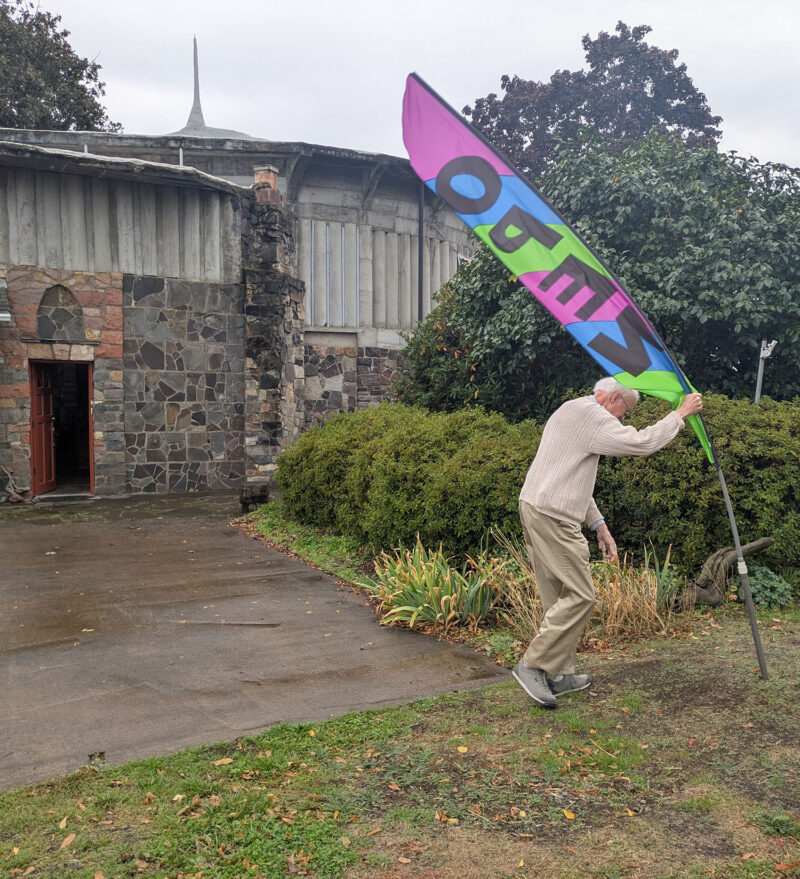Despite its unique appearance, Living Rock Studios sits unassumingly like a time capsule near the outskirts of Brownsville.
Within its stone walls are testaments of time – Earth’s formation of rocks and minerals, historical manmade artifacts, and even stories thousands of years old recounted in the Bible.
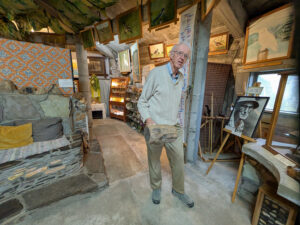
David and Marilyn “Penny” Mackey observed the monument’s 40th anniversary this month, harkening back to Oct. 13, 1985, when Penny’s parents, Howard and Faye Taylor, celebrated their 50th wedding anniversary alongside the structure’s grand opening.
Howard constructed the museum over the course of a quarter century.The monument could be seen as something of a tribute to God’s works of geology.
Or maybe Howard just wanted to show people samples of his masonry skills.
That is, after all, how it began, according to David Mackey, who provided a tour of the studio recently.
The story goes that the Taylors moved to Brownsville from Cottage Grove in 1951. Penny was just a toddler at the time.
Prior to this, Howard worked for the Army Corps of Engineers, a job that took him and his family throughout Oregon. The work exposed him to unique rocks, crystals and historical Native American artifacts — beauties of nature and history that were being destroyed by man’s expansion in the state. He was given permission to collect them for preservation.
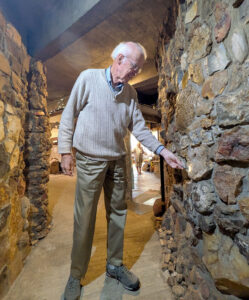
After settling in Brownsville, Howard took work as a timber cruiser and land surveyor for the Schneider Lumber Company, situated just behind their home. Only a few years later, though, Taylor had to quit due to declining health.
He then began a landscaping business, but soon found himself in a 14-month job removing and rebuilding the 400 tons of stone of Albany’s Presbyterian church to reinforce its footings.
Meanwhile, he converted his garage into a rock shop and, to demonstrate his skills in stone masonry, began building walls of what would later become the Living Rock Studios.
Raw, organic shapes of rocks and crystals are found embedded between layers of flat, rectangular slabs of stone. These make up the first dozen layers a visitor is initially introduced to when entering the foyer. Some of the rocks have been sliced open to expose nature’s hidden design within.
The entire tower, roughly two stories high, is estimated to be made up of 800 tons of rock from donations of a thousand rock hounds. The walls are composed of thunder eggs, quartz, tuffa, geodes, scoria, obsidian, agate, crystals, jasper, tourmaline.
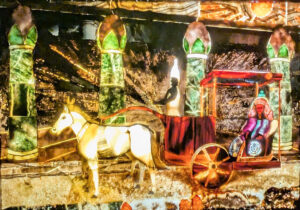
Winding through the building, David invites guests to step inside the crystal room, or notice glass jars cemented within the walls – jars that hold specimens of rock minerals. Every once in a while, his mini flashlight clicks on and David holds it up against an agate embedded in the wall to display its transparent nature.
If the entire structure is not Howard’s magnum opus, then perhaps the seven Living Rock Pictures are. Using thin slices of select rocks, Howard shaped and carved each piece to form, like a puzzle, depictions of biblical stories. A light shines from behind each picture, revealing a stained glass-like painting and the natural lines each geologic specimen formed over hundreds of years.
And then there’s the homage to the biblical “Tree of Life,” floor-to-ceiling pillars made of petrified wood with “trunks” extending above the top floor to meet a 450-square-foot canvas of painted branches and leaves. It was Penny who contributed the canopy to her father’s project.
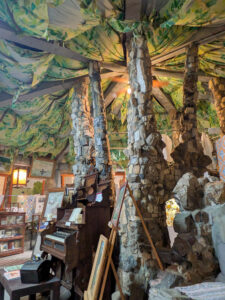
It appears Penny inherited her father’s creativity, though she took an interest in fiber arts more than anything. Her woven and felted works hang throughout the museum among her father’s other creative pursuits of painting and wood carving.
But Living Rock Studios holds one other attraction for visitors: cultural history.
Artifacts from native tribes and items passed down through the family’s generations — clothing, spectacles, bibles, photographs, blankets, tools, instruments, dishes – all add an historical element to the geological showpiece.
Howard and Faye Taylor have long since passed, and it is the Mackeys who now invite visitors to appreciate the geologic construction. Once they themselves pass on, David said, it will be up to God what happens to Living Rock Studios.
Living Rock Studios, located at 911 W Bishop Way in Brownsville, is open for tours from 10 a.m. to 5 p.m. Wednesday through Saturday.


